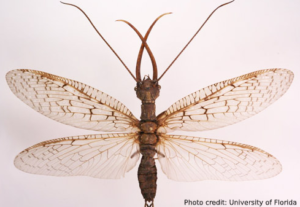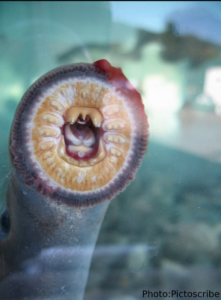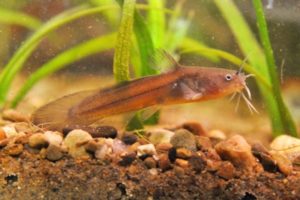The James River is a beautiful place – far from frightening – but we are celebrating Halloween today. Let’s get spooky with the scariest critters of the James (and why you shouldn’t fear them)!
Hellgrammite/Dobsonfly

A hellgrammite is one scary looking larva! The top invertebrate predator in their rocky streambed habitat, hellgrammites are the larval form of something that looks even more terrifying: the Dobsonfly. The Dobsonfly’s jaws strike fear into the hearts of onlookers. An adult male eastern dobsonfly can grow up to five inches, with its jaws able to grow up to half that length! But the size of the jaws is precisely what prevents them from packing a powerful pinch, like a larval hellgrammite. The adult male’s jaws are not a threat to humans and are used to fight other males instead. Both the larvae and adults are capable of catching small fish, an impressive boast as insects are typically seen as a lower form on the food pyramid. Though they can look terrifying, their presence is a sign of a healthy river, as they are highly intolerant of water pollution!
 Lamprey
Lamprey
The lamprey seems like something out of a horror movie: a sucker-like mouth with sharp teeth arranged in a circle that attaches to prey and sucks blood. Thankfully, lampreys are only in the James between March and June to breed. The female lamprey deposits her eggs in nests created by males, and both die soon after spawning. After the eggs hatch, the small larvae are swept downstream and burrow into sand and silt at the bottom of the river and feed on debris and algae, helping to prevent algal blooms, which helps all aquatic life!
 Madtom
Madtom
These fish inhabit the bottoms of streams, rivers, and lakeshores and are actually fairly difficult to catch as they are typically 2-3 inches in length. This may be a good thing, however, as they have saw-edged spines in their pectoral fins that have venom glands at the base and can produce jagged, painful and stinging wounds! Madtoms keep the James’s insect population in check as they feed on the larval form of aquatic insects.
 Bristle Worm
Bristle Worm
These worms earned their titles: their entire bodies are covered in tiny, hair-like bristles. Bristle worms are found along mudflats, shallow waters, and shorelines. When handled, many species of bristle worm can break apart, and then later regenerate the lost or damaged parts. Though terrifying, they can be a good sign – some species of bristle worms are vulnerable to dead zones, and spotting these particular species means the river has sufficient levels of dissolved oxygen.

